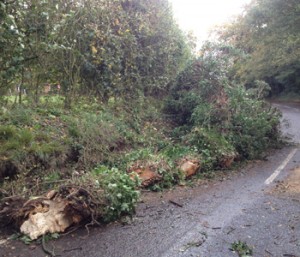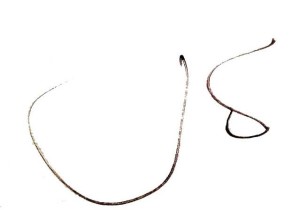What to do with Ivy
This is an article that Rob Jones of The Garden Design Co Ltd wrote which I thought was worth sharing as so may of us ponder the merits of ivy in our trees. It’s well worth a read…
Octobers’ Wildlife Column in the Royal Horticultural Society’s The Garden Magazine waxed lyrical about the benefits of Ivy. “Ivy offers food and shelter” the article stated and this is accurate to a point. Anyone walking past an ivy clad fence experiences the hum of bees and other insects seeking out its late flowers in the late Autumn, with wrens and other nesting birds soon making homes in the Ivy.
Nevertheless, the presence of Ivy on trees, healthy or otherwise has serious adverse consequences and it really is surprising that the RHS continues to assert that “Contrary to popular belief, Ivy does not damage healthy trees”.
 In the first place the sheer scale of an Ivy clad tree and the resultant wind sail effect, offers the very real prospect of limbs or worse being felled by gales, as was experienced by this mature Hawthorn (above) during the storm of 28th October 2013, causing fortunately only havoc and disruption to road users in Berkshire.
In the first place the sheer scale of an Ivy clad tree and the resultant wind sail effect, offers the very real prospect of limbs or worse being felled by gales, as was experienced by this mature Hawthorn (above) during the storm of 28th October 2013, causing fortunately only havoc and disruption to road users in Berkshire.
If gales are survived, Ivy can rapidly envelope much of the trees’ crown, compromising the amount of leaf canopy available for photosynthesis and transpiration, all of which will have an adverse effect on the health and well being of the tree.
More sinister though, is the fact that in the forks of the trees’ branches, deciduous leaves will be caught. Over time these rot, leading to excellent places for hidden areas of pathogens to take hold, thus leading to limbs breaking off without warning. In other cases I have seen large bracket fungi being hidden by the Ivy. Potentially dangerous pathogens are hence hidden out of sight and out of mind.
So there might be a place for Ivy to clad sound walls, lap fence panels and as a ground cover, but please lets recognise the very real threat it poses to our trees.
Hope you found that interesting? We have lots of it in our oak trees at the bottom of our garden & it is an absolute nightmare to remove. We shall persist in order to help our lovely trees & improve our outlook too to the golf course beyond.
Bye for now
